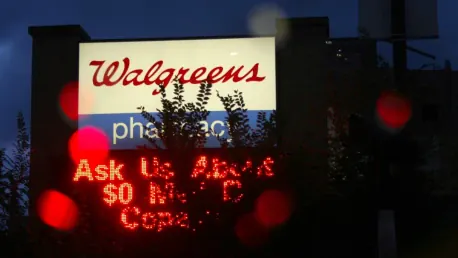The Department of Justice (DOJ) has recently filed a lawsuit against Walgreens, accusing the prominent pharmacy chain of dispensing millions of illegal prescriptions for controlled substances, including opioids, over the past decade. This lawsuit, filed in an Illinois district court, asserts that Walgreens’ actions have significantly contributed to the devastating opioid crisis in the United States, resulting in the deaths of hundreds of thousands of Americans. The scale of the crisis and the serious nature of the accusations against Walgreens highlight the gravity of the situation and the potential implications for the company.
Allegations Against Walgreens
At the heart of the DOJ’s complaint are two primary allegations. Firstly, Walgreens is accused of violating the Controlled Substances Act by failing to ensure that prescriptions filled had a legitimate medical purpose or were valid. This allegation suggests that Walgreens did not take adequate measures to verify the legitimacy of the prescriptions they were filling, thereby contributing to the widespread misuse of opioids. Secondly, the company is also accused of breaching the False Claims Act by receiving reimbursements from federal healthcare programs for these questionable prescriptions. The timeframe specified in the allegations spans from 2012 to the present date, indicating a prolonged period of alleged misconduct. According to the DOJ, Walgreens filled millions of unlawful prescriptions, including those for excessive opioid quantities, premature refills, and the notorious “holy trinity” combination of an opioid, a benzodiazepine, and a muscle relaxant—drugs commonly abused in tandem. These allegations suggest a systematic failure on the part of Walgreens to adhere to legal and ethical standards when dispensing controlled substances.
The DOJ’s lawsuit underscores that Walgreens’ issues related to opioids—and the associated financial risks—are far from over. This recent legal action consolidates four whistleblower complaints against Walgreens, dating back to 2018. The government’s complaint details numerous instances in which Walgreens purportedly overlooked clear indicators that certain prescriptions were likely illegal. It is also claimed that Walgreens pressured its pharmacists to dispense drugs swiftly, neglecting the due diligence required to verify the legitimacy of the prescriptions. Additionally, Walgreens purportedly restricted its pharmacists from alerting each other about specific doctors notoriously known for overprescribing opioids. The severity of these allegations paints a troubling picture of Walgreens’ role in the opioid crisis, suggesting that the company’s actions—or lack thereof—may have significantly contributed to the epidemic.
Walgreens’ Defense and Countersuit
In response to the DOJ’s lawsuit, Walgreens has filed a countersuit. The company is requesting the court to clarify the expectations and requirements for pharmacists when dispensing controlled prescriptions. Walgreens is defending itself against the DOJ’s claims, suggesting that the action overlooks the remediation and oversight initiatives the company has put in place since settling with various state and local governments over its role in the opioid crisis in 2022. Walgreens argues that the DOJ’s case is built on subjective and arbitrary rules regarding the dispensing of controlled substances. According to Walgreens, these rules did not undergo the necessary formal rulemaking process, rendering them unfair and unpredictable.
U.S. law mandates that pharmacies should not knowingly fill invalid prescriptions but does not penalize them for filling prescriptions that are merely suspicious. Walgreens contends that punishing pharmacists for not discerning the legitimacy of a prescription constitutes regulatory overreach. The company asserts that it has implemented numerous measures to improve oversight and compliance in response to the opioid crisis, including enhanced training for pharmacists, stricter verification processes, and collaboration with law enforcement agencies. By filing a countersuit, Walgreens aims to protect its interests and challenge what it perceives as an unfair and subjective application of regulations. However, the outcome of this legal battle remains uncertain, as the court will ultimately determine the validity of the DOJ’s allegations and Walgreens’ defense.
Financial and Operational Challenges
Walgreens holds a significant position in the U.S. pharmacy market with thousands of locations nationwide. The past few years have been challenging for Walgreens, characterized by stagnant reimbursement rates for dispensing prescriptions, reduced demand for vaccines and tests post-COVID-19 pandemic, and unsuccessful ventures in healthcare delivery. Additionally, Walgreens is burdened with substantial financial obligations due to its involvement in the opioid epidemic. The financial strain on the company has been exacerbated by its ongoing legal battles and the cost of implementing compliance measures to address the opioid crisis.
More than two years ago, the company agreed to a nearly $6 billion settlement to resolve numerous opioid-related lawsuits and has continued to engage in other settlements not included in the initial multistate agreement. As of November, Walgreens has reported a $6.6 billion liability to cover obligations related to these opioid settlements. The significant financial burden from these settlements has put considerable pressure on Walgreens’ operations and long-term profitability. The company’s ability to navigate these challenges will be critical to its future success and reputation in the market.
Potential Penalties and Historical Context
Should Walgreens be found guilty, the financial repercussions could be severe. The DOJ has highlighted civil penalties of almost $81,000 for each illegal prescription under the Controlled Substances Act, alongside additional penalties for each prescription reimbursed by the government under the False Claims Act. Given that the alleged misconduct involves millions of prescriptions, the potential financial penalties could be enormous. However, historical settlements in similar cases have tended to be significantly lower than the maximum potential fines. Previous cases against other major pharmacy chains provide some context for understanding the potential outcomes for Walgreens.
The DOJ’s lawsuit against Walgreens mirrors previous legal actions against other major pharmacy chains, such as CVS, Rite Aid, and Walmart. These cases share a common theme of alleging that the companies knowingly dispensed suspicious controlled substances. Among these lawsuits, only the case against Rite Aid has reached a settlement, partially due to Rite Aid’s bankruptcy, resulting in a settlement amount of $409.3 million last summer. The outcomes of these cases suggest that while the potential fines for Walgreens could be substantial, a settlement is likely to be reached for a lower amount. The legal precedents set by these cases will play a crucial role in shaping the final resolution of the DOJ’s lawsuit against Walgreens.
Future Implications and Analyst Predictions
The Department of Justice (DOJ) recently initiated legal action against Walgreens, alleging that the major pharmacy chain dispensed millions of illicit prescriptions for controlled substances, including opioids, over the last ten years. This lawsuit, brought before an Illinois district court, claims that Walgreens’ practices have played a considerable role in fueling the severe opioid crisis in the United States, which has led to the deaths of hundreds of thousands of Americans. The scale of this public health disaster and the serious allegations pressed upon Walgreens underscore the severe nature of the situation and the potential repercussions the company could face. This legal battle is a significant chapter in the broader fight against the opioid epidemic, shining a spotlight on the responsibilities and actions of large pharmaceutical retailers. The outcome of this case could have far-reaching consequences not only for Walgreens but also for the broader pharmaceutical industry and public health policies in America.









